Oncogenic Deregulation of EZH2 as an Opportunity for Targeted Therapy in Lung Cancer
- PMID: 27312177
- PMCID: PMC5010480
- DOI: 10.1158/2159-8290.CD-16-0164
Oncogenic Deregulation of EZH2 as an Opportunity for Targeted Therapy in Lung Cancer
Abstract
As a master regulator of chromatin function, the lysine methyltransferase EZH2 orchestrates transcriptional silencing of developmental gene networks. Overexpression of EZH2 is commonly observed in human epithelial cancers, such as non-small cell lung carcinoma (NSCLC), yet definitive demonstration of malignant transformation by deregulated EZH2 remains elusive. Here, we demonstrate the causal role of EZH2 overexpression in NSCLC with new genetically engineered mouse models of lung adenocarcinoma. Deregulated EZH2 silences normal developmental pathways, leading to epigenetic transformation independent of canonical growth factor pathway activation. As such, tumors feature a transcriptional program distinct from KRAS- and EGFR-mutant mouse lung cancers, but shared with human lung adenocarcinomas exhibiting high EZH2 expression. To target EZH2-dependent cancers, we developed a potent open-source EZH2 inhibitor, JQEZ5, that promoted the regression of EZH2-driven tumors in vivo, confirming oncogenic addiction to EZH2 in established tumors and providing the rationale for epigenetic therapy in a subset of lung cancer.
Significance: EZH2 overexpression induces murine lung cancers that are similar to human NSCLC with high EZH2 expression and low levels of phosphorylated AKT and ERK, implicating biomarkers for EZH2 inhibitor sensitivity. Our EZH2 inhibitor, JQEZ5, promotes regression of these tumors, revealing a potential role for anti-EZH2 therapy in lung cancer. Cancer Discov; 6(9); 1006-21. ©2016 AACR.See related commentary by Frankel et al., p. 949This article is highlighted in the In This Issue feature, p. 932.
©2016 American Association for Cancer Research.
Conflict of interest statement
P.K.R. is a consultant to Selecta Biosciences Inc, Watertown, MA. J.E.B. is a Scientific Founder of SHAPE Pharmaceuticals, Acetylon Pharmaceuticals, Tensha Therapeutics and C4 Therapeutics and is the inventor on IP licensed to these entities. J.E.B. currently an employee of Novartis Institutes of Biomedical Research.
Figures
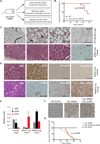
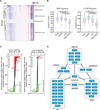
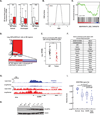
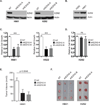
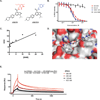

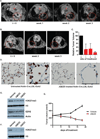
Comment in
-
Developing EZH2-Targeted Therapy for Lung Cancer.Cancer Discov. 2016 Sep;6(9):949-52. doi: 10.1158/2159-8290.CD-16-0800. Cancer Discov. 2016. PMID: 27587466 Free PMC article.
Similar articles
-
Developing EZH2-Targeted Therapy for Lung Cancer.Cancer Discov. 2016 Sep;6(9):949-52. doi: 10.1158/2159-8290.CD-16-0800. Cancer Discov. 2016. PMID: 27587466 Free PMC article.
-
EZH2-mediated Puma gene repression regulates non-small cell lung cancer cell proliferation and cisplatin-induced apoptosis.Oncotarget. 2016 Aug 30;7(35):56338-56354. doi: 10.18632/oncotarget.10841. Oncotarget. 2016. PMID: 27472460 Free PMC article.
-
EZH2 inhibitors reverse resistance to gefitinib in primary EGFR wild-type lung cancer cells.BMC Cancer. 2020 Dec 4;20(1):1189. doi: 10.1186/s12885-020-07667-7. BMC Cancer. 2020. PMID: 33276757 Free PMC article.
-
Carcinogenic roles and therapeutic effects of EZH2 in gynecological cancers.Bioorg Med Chem. 2020 Apr 1;28(7):115379. doi: 10.1016/j.bmc.2020.115379. Epub 2020 Feb 17. Bioorg Med Chem. 2020. PMID: 32098708 Review.
-
Functional and therapeutic significance of EZH2 in urological cancers.Oncotarget. 2017 Jun 6;8(23):38044-38055. doi: 10.18632/oncotarget.16765. Oncotarget. 2017. PMID: 28410242 Free PMC article. Review.
Cited by
-
Identification of SUV39H2 as a potential oncogene in lung adenocarcinoma.Clin Epigenetics. 2018 Oct 22;10(1):129. doi: 10.1186/s13148-018-0562-4. Clin Epigenetics. 2018. PMID: 30348215 Free PMC article.
-
In vivo CRISPR screening unveils histone demethylase UTX as an important epigenetic regulator in lung tumorigenesis.Proc Natl Acad Sci U S A. 2018 Apr 24;115(17):E3978-E3986. doi: 10.1073/pnas.1716589115. Epub 2018 Apr 9. Proc Natl Acad Sci U S A. 2018. PMID: 29632194 Free PMC article.
-
Mutated Chromatin Regulatory Factors as Tumor Drivers in Cancer.Cancer Res. 2017 Jan 15;77(2):227-233. doi: 10.1158/0008-5472.CAN-16-2301. Epub 2017 Jan 6. Cancer Res. 2017. PMID: 28062403 Free PMC article. Review.
-
Ezh2 Acts as a Tumor Suppressor in Kras-driven Lung Adenocarcinoma.Int J Biol Sci. 2017 May 16;13(5):652-659. doi: 10.7150/ijbs.19108. eCollection 2017. Int J Biol Sci. 2017. PMID: 28539837 Free PMC article.
-
Signaling pathways and targeted therapies in lung squamous cell carcinoma: mechanisms and clinical trials.Signal Transduct Target Ther. 2022 Oct 5;7(1):353. doi: 10.1038/s41392-022-01200-x. Signal Transduct Target Ther. 2022. PMID: 36198685 Free PMC article. Review.
References
-
- Jemal A, Bray F, Center MM, Ferlay J, Ward E, Forman D. Global cancer statistics. CA Cancer J Clin. 2011;61(2):69–90. - PubMed
-
- Lynch TJ, Bell DW, Sordella R, Gurubhagavatula S, Okimoto RA, Brannigan BW, et al. Activating mutations in the epidermal growth factor receptor underlying responsiveness of non-small-cell lung cancer to gefitinib. New England Journal of Medicine. 2004;350(21):2129–2139. - PubMed
-
- Paez JG, Janne PA, Lee JC, Tracy S, Greulich H, Gabriel S, et al. EGFR mutations in lung cancer: Correlation with clinical response to gefitinib therapy. Science. 2004;304(5676):1497–1500. - PubMed
-
- Pao W, Miller V, Zakowski M, Doherty J, Politi K, Sarkaria I, et al. EGF receptor gene mutations are common in lung cancers from "never smokers" and are associated with sensitivity of tumors to gefitinib and erlotinib. Proceedings of the National Academy of Sciences of the United States of America. 2004;101(36):13306–13311. - PMC - PubMed
Publication types
MeSH terms
Substances
Grants and funding
LinkOut - more resources
Full Text Sources
Other Literature Sources
Medical
Molecular Biology Databases
Research Materials
Miscellaneous

